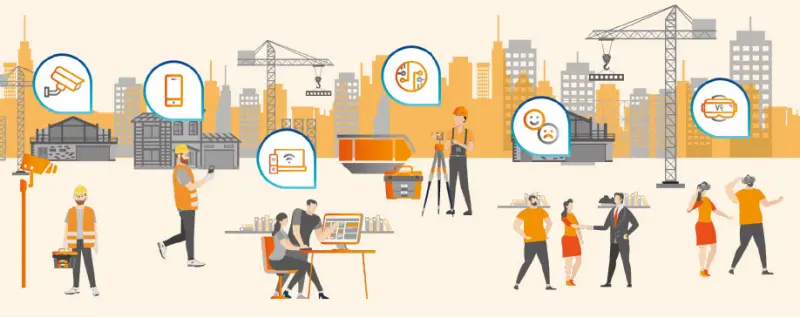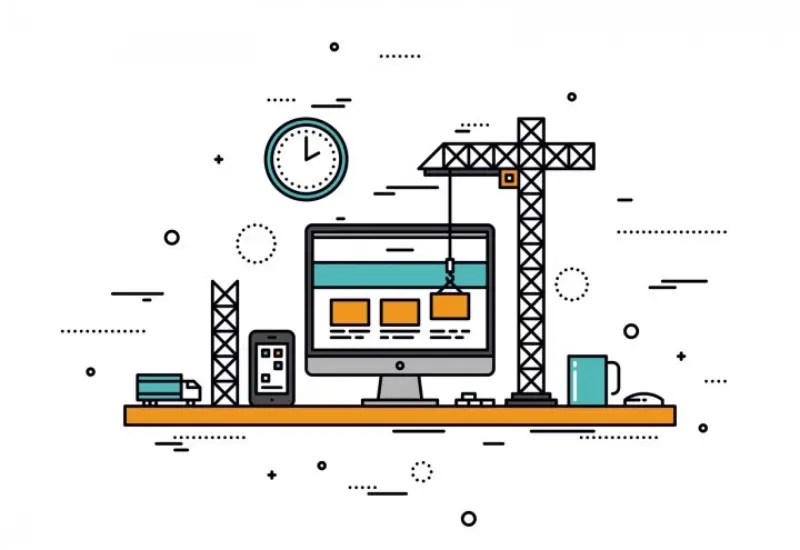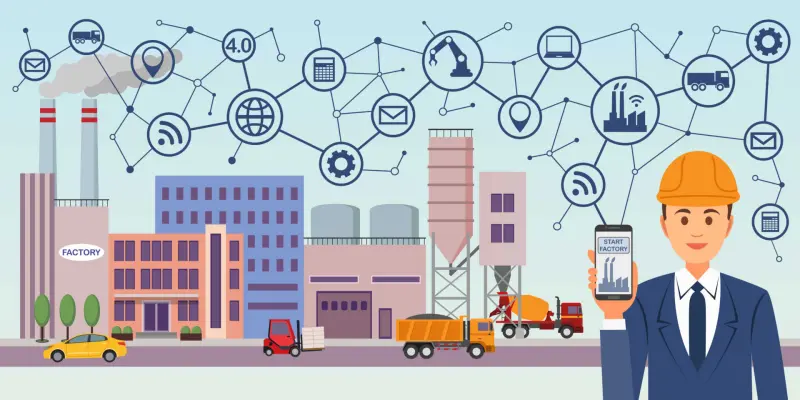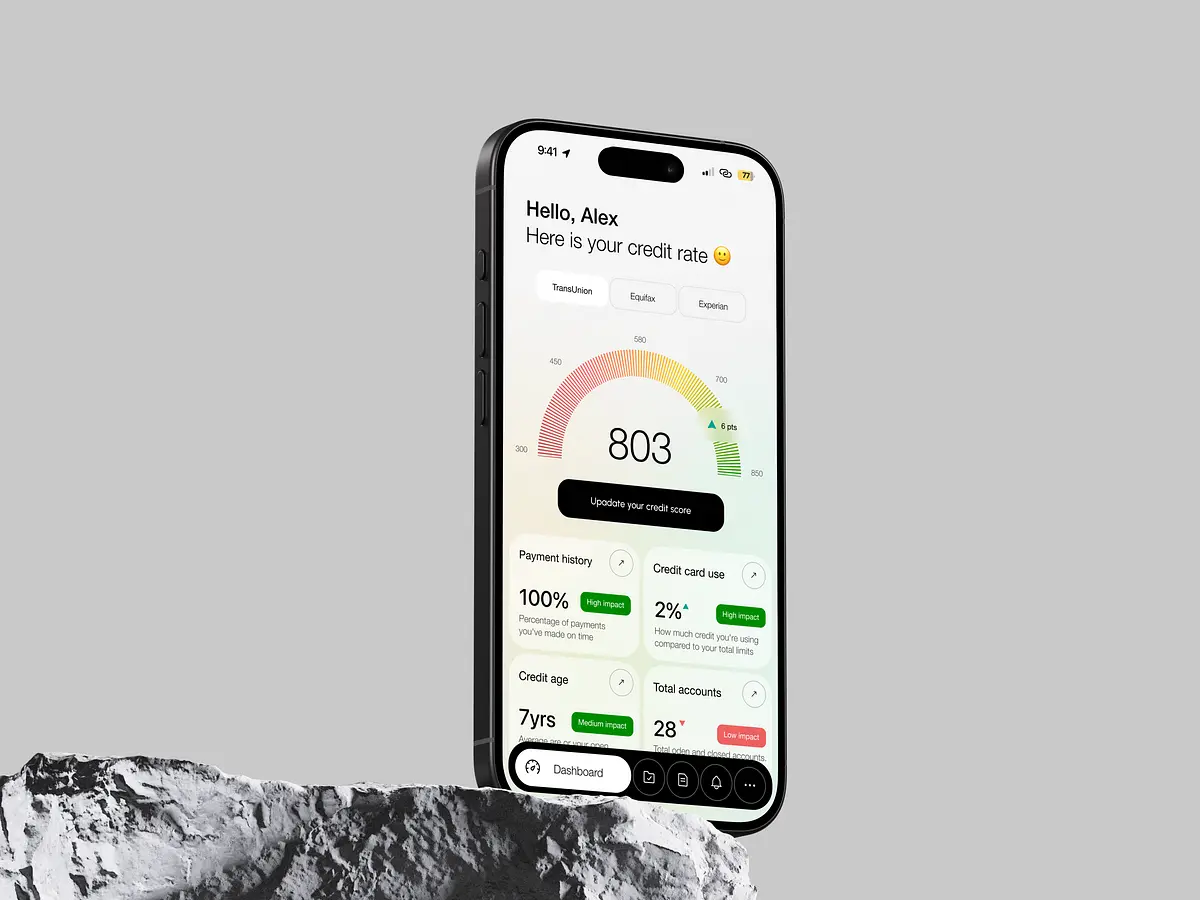IoT in Construction – Everything You Need to Know in 2025
- TECHVIFY Team
- 0 Comments
In recent years, the construction industry has experienced a significant technological shift aimed at addressing rising demand, project delays, and high costs. One of the key technologies driving this change is the Internet of Things (IoT). While IoT is not entirely new, its use is rapidly expanding across various sectors, and construction is one of the latest industries to embrace it.
This article explores IoT in construction and its potential to reshape the industry. We’ll look at how IoT can enhance construction management by improving efficiency, boosting productivity, and enhancing safety on job sites. Additionally, we’ll discuss some of the challenges that come with implementing IoT solutions and offer strategies for overcoming these obstacles.
I. The Fundamentals of IoT in Construction: A Game Changer
Internet of Things in Construction
The construction industry, often referred to as the building sector, is increasingly adopting Internet of Things (IoT) technology to boost productivity, streamline operations, and enhance safety on construction sites. IoT tools such as:
- Sensors
- Mobile devices
- Drones
- Robotics
- IoT hardware
- Building automation systems
allow construction managers to monitor and manage sites in previously unimaginable ways. This shift towards IoT highlights its transformative potential in construction project management, though some technologies may be easier to integrate than others.
The benefits of implementing IoT in construction include better resource and budget management, addressing safety concerns, and reducing waste. IoT tools deliver up-to-the-minute data, enabling managers to make informed decisions informed decisions, ensure timely repairs, and ultimately improve both productivity and customer satisfaction. As IoT technology progresses, its influence on the construction industry will only continue to grow.
II. Why IoT is a Boon to the Construction Industry
The IoT revolution is well underway, bringing about profound changes across all industries. The construction sector is also experiencing the advantages of enhanced connectivity, machine-to-machine communication, data analysis, and edge computing. These advancements are creating tangible benefits for businesses and, by extension, society at large.
For construction companies, the adoption of IoT offers several key advantages, including:
Streamlined Resource Management and Budget Control
Managing expenses in construction is no easy feat. From salaries and fuel costs to equipment purchases and unforeseen breakdowns, staying on budget can be challenging. Many companies struggle due to inefficient resource management, idle workers, and unreliable machinery.
IoT can help managers reduce waste by optimizing the use of materials, equipment, and labor. This leads to smarter spending and fewer unnecessary costs.
Automating processes is crucial for boosting workflow efficiency by reducing manual work and reducing human error. With real-time tracking and monitoring capabilities, managers can gain valuable insights into exactly what resources are needed and when. For example, Just-in-Time (JIT) provisioning allows managers to receive timely alerts on necessary materials and equipment based on project schedules.
Enhancing Site Safety
Construction is one of the most hazardous industries, with a high rate of fatal injuries globally. According to data from the U.S. Bureau of Labor Statistics, one in five workplace deaths occurs in construction. While safety protocols and checklists are in place, workers may not always be aware of them or fail to follow guidelines.
IoT has the potential to improve on-site safety significantly. Smart Personal Protective Equipment (PPE), such as connected helmets and boots, can monitor workers’ vitals and locations, alerting managers to potential injuries in real time. Additionally, IoT-enabled machinery can be programmed to stop automatically in hazardous situations, helping to reduce accidents. By automating dangerous tasks, IoT also minimizes the risk of injuries.
Tackling Waste Management
Fuel wastage is a major challenge in construction, particularly in fleet management. Heavy machinery consumes significant amounts of fuel, which becomes a substantial financial burden with rising fuel costs.
IoT can assist construction companies in managing fuel consumption more efficiently by collecting data on fuel usage and optimizing routes. This not only reduces costs but also contributes to more sustainable practices.
Improving Communication and Coordination
One of the primary advantages of IoT in construction is its ability to enhance communication and coordination on construction sites. With connected devices and machines, all stakeholders can retrieve the necessary information instantly, removing delays in data delivery. IoT in construction keeps everyone—from workers to managers—informed about the status of equipment, personnel, and project progress, enabling smoother collaboration across teams.
Remote Monitoring and Operations
IoT enables remote monitoring, giving project and fleet managers greater control and oversight of multiple job sites, which improves both security and operational efficiency.
With location sensors attached to equipment, managers can track assets in real-time via a centralized platform, offering visibility across various job locations. IoT-powered drones can also provide live video feeds, serving as a preventive measure against theft and vandalism while ensuring better site surveillance.
IoT in Construction Industry
Integrating BIM and Digital Twin Technologies
Building Information Modeling (BIM) is a 3D modeling process that helps construction teams visualize the physical and functional characteristics of their designs. By integrating IoT with BIM, project managers can track progress in real-time, allowing for more accurate updates to stakeholders. This combination of technologies enhances project management and makes sure that everyone involved has a clear view of the project’s current progress.
III. Five Key Applications of IoT in Construction
1. Enhancing Safety with Wearables
Wearables are among the most well-known Internet of Things (IoT) devices and have become particularly useful in construction. Devices like smart helmets and connected work boots are increasingly being deployed on construction sites, significantly improving both safety and efficiency.
Construction accounts for more than 20% of workplace fatalities, but wearables can help lower this figure. For example, smart helmets equipped with sensors can monitor workers’ heart rates and body temperature, detecting signs of overexertion and prompting workers to take a break before they reach dangerous levels of fatigue.
In addition, proximity sensors in wearables can alert workers when they approach hazardous areas, such as fall risks or operating heavy machinery. These devices also contribute to operational efficiency by offering location tracking, enabling managers to monitor the whereabouts of their workforce. Data from wearable sensors can highlight inefficiencies, allowing teams to adjust workflows for better productivity.
2. Improving Safety with On-Site Sensors
Safety sensors on equipment and vehicles represent another valuable IoT application in construction, providing critical safety data about the worksite itself. Just as wearables offer insights into worker safety, these sensors focus on machinery and environmental risks.
Around 75% of struck-by accidents involve heavy equipment. IoT sensors on such machinery can alert operators if they are dangerously close to other workers, or even automatically stop the machine to avoid accidents.
Additionally, maintenance sensors can notify teams when equipment requires repairs, minimizing the risk of breakdowns or malfunctions that could jeopardize worker safety. On-site IoT systems can also detect environmental dangers like toxic fumes or extreme temperatures, sending alerts when conditions become hazardous so workers can evacuate or take necessary precautions.
3. Monitoring Materials for Better Outcomes
IoT devices are also invaluable for tracking the condition and status of construction materials. One prominent example is the use of concrete sensors. By embedding connected sensors in concrete, construction teams can remotely monitor the curing process and identify when the material may require repairs.
Since concrete curing times can vary based on factors like temperature and humidity, there is no fixed timeframe for completion. IoT sensors allow teams to track this process in real time, ensuring they don’t resume work prematurely or face unnecessary delays, thus optimizing project timelines.
These technologies can also be used for post-construction monitoring. IoT sensors embedded in infrastructure can alert building owners or authorities to signs of structural damage, such as cracks or weakening, enabling them to take corrective action before the problem worsens or becomes costlier to fix.
4. Preventing Theft with IoT Technologies
IoT is playing an increasingly important role in construction site security. Construction sites are often targeted by thieves due to their valuable equipment and often minimal security measures. With the ongoing increase in construction material costs, theft has become an even more pressing issue, but IoT devices offer effective solutions.
Connected drones, for instance, can patrol sites without the need for a human security presence, deterring potential thieves by providing constant surveillance. If a theft does occur, video footage from the drones can help identify and track down the culprits.
IoT location sensors installed in vehicles and equipment can also transmit real-time location data, allowing stolen tools or machinery to be quickly tracked and recovered without alerting the thief.
5. Reducing Waste with IoT Solutions
IoT is also proving to be a valuable tool for waste management in construction. In 2018 alone, construction and demolition activities generated 600 million tons of waste, not including wasted fuel or energy consumption.
By utilizing IoT tracking systems, construction teams can identify inefficient fuel and energy use patterns. For example, data from vehicle tracking systems can show where fuel is being wasted, enabling teams to adjust their operations and reduce consumption. Similarly, IoT systems applied to other equipment can help minimize energy usage.
IoT sensors can also monitor waste levels on-site, pinpointing the sources of excess debris and guiding teams toward more sustainable practices. These systems help keep construction sites clear of unnecessary waste, improving safety and allowing for more efficient daily operations.
Looking to Outsource Development?
Contact TECHVIFY – Vietnam’s Leading Offshore Software Development & Outsourcing Company, for consultation and development services.
IV. Overcoming the Challenges of IoT in Construction Industry
While the adoption of IoT in construction brings numerous benefits, there are several obstacles that companies must address to leverage these technologies fully. One of the primary challenges lies in the relative newness of IoT within the construction industry, which often leads to hesitation among project managers and contractors. This reluctance is largely due to the limited familiarity with the technology and its applications, which can delay widespread adoption and prevent companies from maximizing the potential advantages of IoT.
The Need for Specialized Skills
Another significant hurdle is the requirement for specialized skills to manage and maintain IoT devices and systems effectively. Many construction teams lack the expertise needed to handle these advanced technologies, highlighting the broader issue of integrating IoT solutions with existing operational processes. Without the proper training and knowledge, teams may struggle to fully benefit from IoT’s capabilities, leading to inefficiencies or even improper use of the technology.
Compatibility with Legacy Systems
Furthermore, ensuring that different IoT devices can seamlessly interact with older construction management software presents a major technical challenge. Compatibility issues can disrupt workflows or create bottlenecks if the IoT devices are not properly integrated. This can negate some of the benefits of automation, as teams may still need to manage manual processes or deal with system errors.
IoT in Construction
V. Future Trends for The Internet of Things in Construction
1. Predictive Maintenance for Equipment
Predictive maintenance will become a standard practice, thanks to IoT technology. Sensors on machines and tools will collect data on their condition, helping teams predict when repairs are needed. This approach will prevent unexpected breakdowns, reduce downtime, and extend the life of the equipment. By addressing issues before they become major problems, construction sites will run more smoothly and efficiently.
2. 5G Networks for Faster Data Sharing
The introduction of 5G technology will make IoT devices in construction much more effective. With faster data transfer speeds, construction teams will be able to receive and process data in real time. This will improve communication between IoT devices, drones, wearables, and autonomous machines. Faster data means quicker decision-making, better safety measures, and more efficient project management.
3. Focus on Sustainability with IoT
IoT will play a key role in making construction more sustainable. By tracking energy use, fuel consumption, and material waste, IoT systems will help construction teams find ways to reduce their environmental impact. Smart sensors will monitor energy usage on job sites while tracking systems will help reduce fuel waste. This will cut costs and help meet growing demands for environmentally friendly construction practices.
Conclusion
The Internet of Things (IoT) is already making a huge difference in the construction industry, solving major issues like project delays, high costs, and safety risks. With its ability to improve resource management, boost safety, reduce waste, and enable real-time monitoring, IoT in construction is shaping the future of the industry. While there are challenges—like integrating new tech and training staff—the benefits far outweigh the obstacles.
As IoT continues to develop, companies that adopt it now will have the edge in staying efficient and competitive. The time to act is now; embracing this technology will lead to safer, smarter, and more successful projects.
Ready to see how IoT can work for you? Let’s chat! At TECHVIFY, we make it easy to get started. Reach out for a free consultation, and we’ll walk you through how our IoT solutions can help your projects run smoother, safer, and more cost-effective.
TECHVIFY – Global AI & Software Solutions Company
For MVPs and Market Leaders: TECHVIFY prioritizes results, not just deliverables. Reduce time to market & see ROI early with high-performing Teams & Software Solutions.
- Email: [email protected]
- Phone: (+84)24.77762.666








